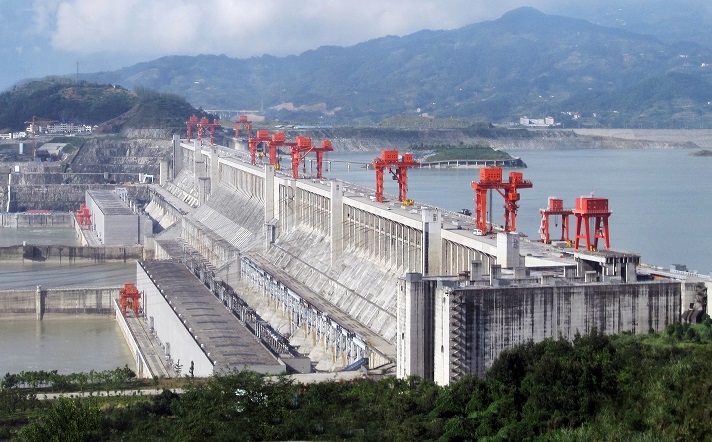2.2 The total energy balance: exercise 2 (example)
Course subject(s)
2. Energy balances
The Three Gorges Dam in the river the Jangtsekiang in China is the largest hydroelectric dam in the world. The dam is 2335 meters long and has a water reservoir with a surface area of around a thousand square kilometres. The three Gorges Dam is the world’s largest power station in terms of installed capacity (22,500 MW), according to Wikipedia. In 2014, the dam generated 98.9 TWh of electricity, which is about 0.4% of the total use of energy in China (in 2008). To produce all this electricity, the dam contains 34 electricity generators: 32 main generators with a capacity of 700 MW and 2 plant power generators with a capacity of 50MW. Water is being tapped from the reservoir and falls through pressure pipelines to a generator, where the electricity is generated. In this exercise, you will learn how to calculate the power that can be delivered by the falling water.

We are going to look at a simplified generator, with fictional dimensions. We assume that the generator is placed directly above the water surface of the river below the dam. Water flows from the top of the dam to the generator, through a 100 meter long pipeline. The diameter of the pipeline is 75 cm. The water has a constant density and flows out from a single pipe at a rate of 1.23 m3/s.
QUESTION 2.2.10
Make a sketch of the pipeline and draw the volume and energy flows.

The Basics of transport phenomena by TU Delft OpenCourseWare is licensed under a Creative Commons Attribution-NonCommercial-ShareAlike 4.0 International License.
Based on a work at https://ocw.tudelft.nl/courses/basics-transport-phenomena/.



